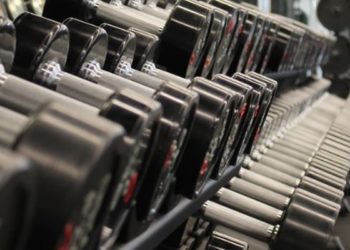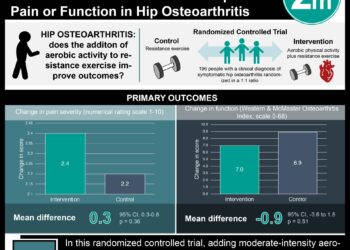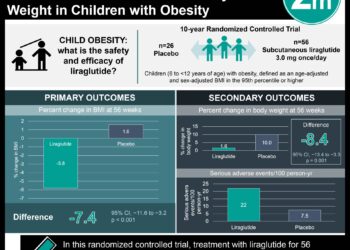Majority of adolescents’ physical activity obtained at school
1. On school days, adolescents obtained 55% of their daily physical activity at school, but a relatively low percentage of total time at school was found to be active time (4.8%).
2. Adolescent girls obtained less physical activity minutes per day than boys in all recorded locations except near school.
Evidence Rating Level: 2 (Good)
Study Rundown: It is estimated that only 8% of United States youth achieve the recommended ≥60 minutes of moderate to vigorous physical activity (MVPA) a day. Understanding locations and settings of youth physical activity may aid in public health interventions but previous studies have been limited by self-report methods. The current study was focused on understanding the importance of various locations where children engaged in physical activing by using Global Positioning System (GPS) technology. Researchers found that the average participant did not meet the recommended guidelines for daily physical activity. Most activity was obtained at school but the large majority of school time was not spent in physical activity. Boys obtained significantly more exercise time in all locations except near home. Study findings may have been limited by unreliable GPS signaling, lack of specificity for ‘other’ locations, and socioeconomic disparities among participants. However, these results should influence providers to encourage their patients to spend less time at home and to other neighborhood and school situations which will foster physical activity.
Click to read the study, published today in Pediatrics
Relevant Reading: Health consequences of obesity in youth: childhood predictors of adult disease
Study Author, Dr. Jordan A. Carlson, PhD, MA, talks to 2 Minute Medicine: Research Assistant Professor and Director of Community-Engaged Health Research at Children’s Mercy Hospital, University of Missouri-Kansas City.
“Schools, homes, neighborhoods, and other community-based settings (e.g., parks) all play an important role in kids’ physical activity. When working with a family, it is important to consider how activity-supportive the environment is in each of these locations, and tailor messages based on this information. If a child’s school does not have a PE teacher or does not provide at least 30 minutes of daily physical activity, families can be encouraged to seek physical activity opportunities at home and in the community. If neighborhood safety is a concern, families can be encouraged to find safe places for physical activity elsewhere in their community. Physicians can support community-based efforts by participating in Safe Routes to School and similar programs as education leaders and role models. Both physicians and parents can work with city officials and pedestrian advocacy groups to advocate for better neighborhood safety and pedestrian infrastructure. Physicians and parents can also work with school leaders to support schools to provide ample opportunities for physical activity and request more transparency and accountability around school-based physical activity.”
In-Depth [prospective cohort]: Researchers included data from 549 adolescents, ages 12 to 16 years, from the Teen Environment and Neighborhood study during 2009 to 2011. Participants wore an accelerometer and GPS tracker together for an average of 7 days total. Researchers analyzed physical activity and time spent at each location (home, near home, school, near school, and all other locations). Participants obtained on average 39.4 minutes of MVPA per day. On school days, 55.2% of MVPA occurred at school, and the majority of MVPA minutes were at the home location (37.4 of overall MVPA) as well as other locations (34.3% of overall) during non-school days. A total of 42.0 minutes of MVPA were obtained on school days and 32.1 minutes on non-school days. During school days, the proportion of location time in MVPA was lowest at school (4.8%) and the highest at the near school (10.4%) and near home locations (10.3%). There was no significant difference between locations on non-school days (6.2%-7.7%), except for the difference between near home (7.2%) and at home (4.6%) sites (p < .05). Girls obtained a lower percentage of time in MVPA at all locations than boys except for at home.
Image: PD
©2015 2 Minute Medicine, Inc. All rights reserved. No works may be reproduced without expressed written consent from 2 Minute Medicine, Inc. Inquire about licensing here. No article should be construed as medical advice and is not intended as such by the authors or by 2 Minute Medicine, Inc.






![Adverse pregnancy outcomes associated with thrombophilias [Classics Series]](https://www.2minutemedicine.com/wp-content/uploads/2015/07/Classics-2-Minute-Medicine-e1436017941513-75x75.png)
